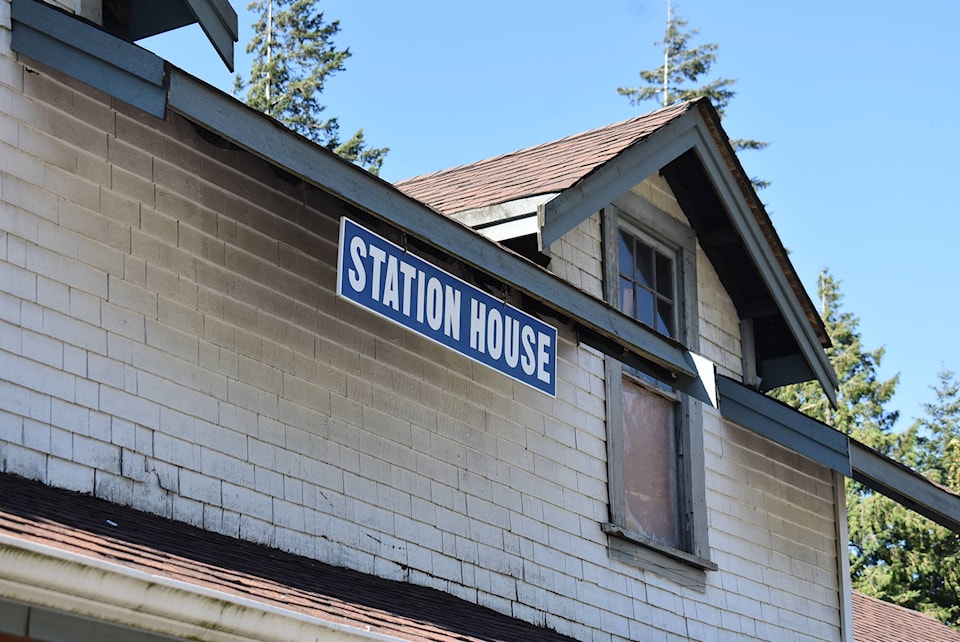Dear Mayor Robb and Councillors:
Recently, I was made aware of the planned demolition of the Hope Station House by the District of Hope. I feel strongly that the demolition of this significant part of Hope’s heritage and history would be a sad mistake. It would mean the loss of one of the few remaining historic buildings in Hope – once it’s gone, it’s gone.
This building means so much to me and the family, starting with our arrival in Hope in 1944 to what would become my beloved hometown of Hope. Dad was employed by the CN Railway, and as children we used to go up to the station to meet him after work. Occasionally, Dad would take us to the station, help us on to the train, and we would be off for a weekend trip to Jasper and Edmonton. Our friend Barbara Leger took me to see Santa Claus at Eaton’s in Vancouver in 1951, getting me up at the barbaric hour of 3:30 in the morning to catch the train at the CN Station. In the mid-fifties, I had piano lessons upstairs at the Station House with Josephine St. John, whose husband was stationmaster. At the time I wondered how on earth that grand piano got up there – and I still wonder about that today! Every evening, I rode my bike up to the tracks to wave at the people on the train as the 6:00 eastbound passenger train rolled through, and wished I was on that train speeding towards travel adventures. I left from that station when I was on my way to basic training in the RCAF, and arrived there when I came home on leave. And at the station many years later, many friends joined our family in celebrating our Mum’s 90th birthday. And so, as you see, the Hope Station House has played a greatly important part in my life, and that of our whole family.
I have taken the liberty of cutting and pasting excerpts from the websites of three BC communities, reflecting what they have done with their railway station houses, all of which I have visited. Not only have Fernie, Grand Forks and Midway preserved and protected an important part of their respective heritages, those station houses now play a vital role in their communities and serve as an important reminder to everyone of the significant part the railways played in the development of our province and country. The excerpts follow:
“One outstanding heritage building in Fernie is the Canadian Pacific Railway Station, dating back to 1908, after Fernie’s second fire. When railways ruled the world of transportation and communication, it was the centre of intense activity and remains so today. In 1991, the Station moved a few metres from its original site where volunteers refurbished, restored, and ensured it has remained The Arts Station, home of the Fernie & District Arts Council. The original lobby is a gallery for the display of works by local artists; the ticket office is a restaurant; the baggage room is a 100-seat theatre used by visiting and local performers. Quilters, painters, stitchers and weavers use the upper floor while musicians and pottery enthusiasts practice their crafts in the basement studios.
“The CPR built the first railroad into the Boundary Country in 1899. The station, the oldest CPR station in B.C. still in its original location, is located in West Grand Forks, in what was originally the City of Columbia. This building is now home to The Station Pub”
“The Kettle River Museum, which displays the Boundary area’s history, is the location of “Mile 0” of the Kettle Valley Railroad and the original station house. It was built in 1900 and houses exhibits commemorating the steam railway era of Southern BC and the British Columbia Provincial Police Force. The museum sits adjacent to the Trans Canada Trail and is a perfect rest stop for visitors.”
My question to you, Mayor and Councillors, is “If Fernie, Grand Forks and the very small community of Midway, BC could do it, why couldn’t Hope?”
Rene MacDonald
